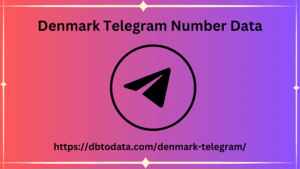Post by amirmukaddas on Mar 11, 2024 23:39:03 GMT -6
Useless SEO pages are those that are not considered worthy of receiving organic traffic from Google. Very often they are the result of impromptu publications, the result of chance and the mood of the moment. It's fine to write an article in one go, but chronicling similar behavior can distance a blog from the topic it deals with or at least from what Google attributes to it. If you don't want to take risks in this sense, I suggest you work on a good SEO-oriented editorial plan and never abandon it. What is an editorial plan from an SEO perspective? An editorial plan from an SEO perspective is a document that specifies how a website should be updated and modified so that its contents obtain a good position in search engine results. The editorial plan should include a list of target keywords, topics of interest to the target audience and possibly a publication schedule to ensure that the website is regularly updated with relevant and quality content.
The editorial plan may also include the promotion of content through social media channels and other online platforms to increase the visibility of the website and attract qualified traffic. How to identify topics It involves carrying out keyword research by mainly analyzing two factors, the first is the context of the relevant websites , i.e. those that obtain positionings for the same keywords on which you compete, the second is the context of the relevant topics , i.e. the totality of the topics processed in the context of the relevant websites. To operationalize a similar study, once I have identified the 4 closest competitors in terms of type and quantity of keywords, I use the advanced filters of Semrush 's domain vs domain function to create intersections useful for discovering: – the common Denmark Telegram Number Data keys for the relevant websites – the best keys for relevant websites – the best keys of lower/higher traffic websites Once I have weighed the search volumes and the relevance of the keys with respect to the reported visibility objectives, I use SEO-hero starting from "broad" keys that define the entire area of interest and proceed by selecting and semantic analysis on the forms composed of the most frequent in the first 100 search results.

Once this second step has been completed, I take a clean document and insert the Focuses into it , i.e. ALL the data extracted from the research described above. How to find titles for articles The titles must have at the centre, not necessarily at the beginning, the terms that describe a particular topic – e.g. hallux valgus – I could say the focus key , but believe me, it is no longer a question strictly linked to the keyword itself, but rather to the definition and circumscription of a topic . To find the most suitable title, I open Google and look at the contents on the first page of results. The objective is to identify a new one that covers still outstanding search intentions (if there are any) or alternatively that is provocative enough to attract a "curious" click, which we also like. In this second case the article will have to be developed to develop that nuance and possibly drag users to the end, on the logic of storytelling applied to SEO.
The editorial plan may also include the promotion of content through social media channels and other online platforms to increase the visibility of the website and attract qualified traffic. How to identify topics It involves carrying out keyword research by mainly analyzing two factors, the first is the context of the relevant websites , i.e. those that obtain positionings for the same keywords on which you compete, the second is the context of the relevant topics , i.e. the totality of the topics processed in the context of the relevant websites. To operationalize a similar study, once I have identified the 4 closest competitors in terms of type and quantity of keywords, I use the advanced filters of Semrush 's domain vs domain function to create intersections useful for discovering: – the common Denmark Telegram Number Data keys for the relevant websites – the best keys for relevant websites – the best keys of lower/higher traffic websites Once I have weighed the search volumes and the relevance of the keys with respect to the reported visibility objectives, I use SEO-hero starting from "broad" keys that define the entire area of interest and proceed by selecting and semantic analysis on the forms composed of the most frequent in the first 100 search results.

Once this second step has been completed, I take a clean document and insert the Focuses into it , i.e. ALL the data extracted from the research described above. How to find titles for articles The titles must have at the centre, not necessarily at the beginning, the terms that describe a particular topic – e.g. hallux valgus – I could say the focus key , but believe me, it is no longer a question strictly linked to the keyword itself, but rather to the definition and circumscription of a topic . To find the most suitable title, I open Google and look at the contents on the first page of results. The objective is to identify a new one that covers still outstanding search intentions (if there are any) or alternatively that is provocative enough to attract a "curious" click, which we also like. In this second case the article will have to be developed to develop that nuance and possibly drag users to the end, on the logic of storytelling applied to SEO.


